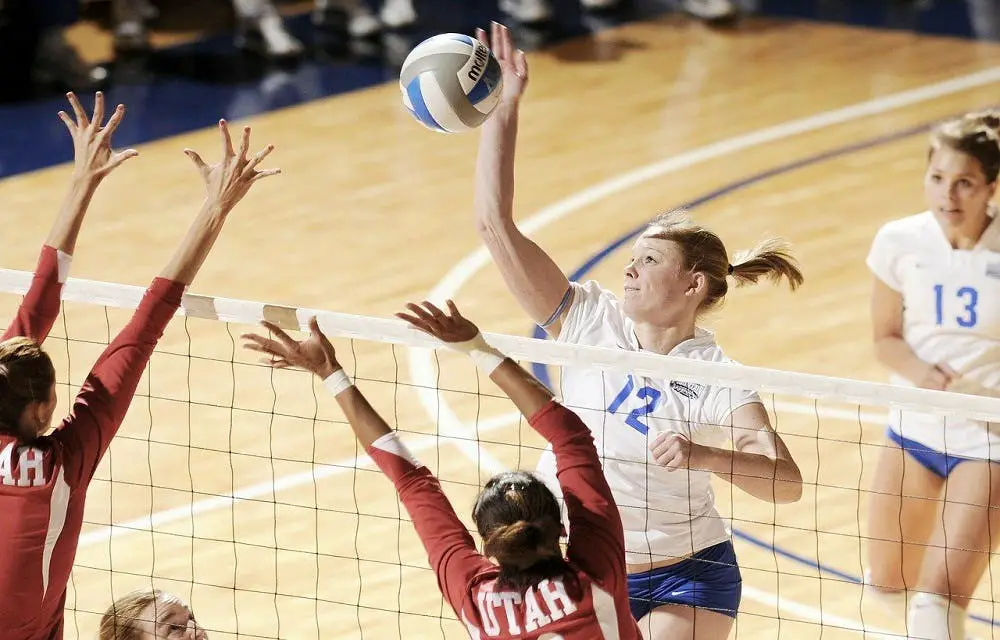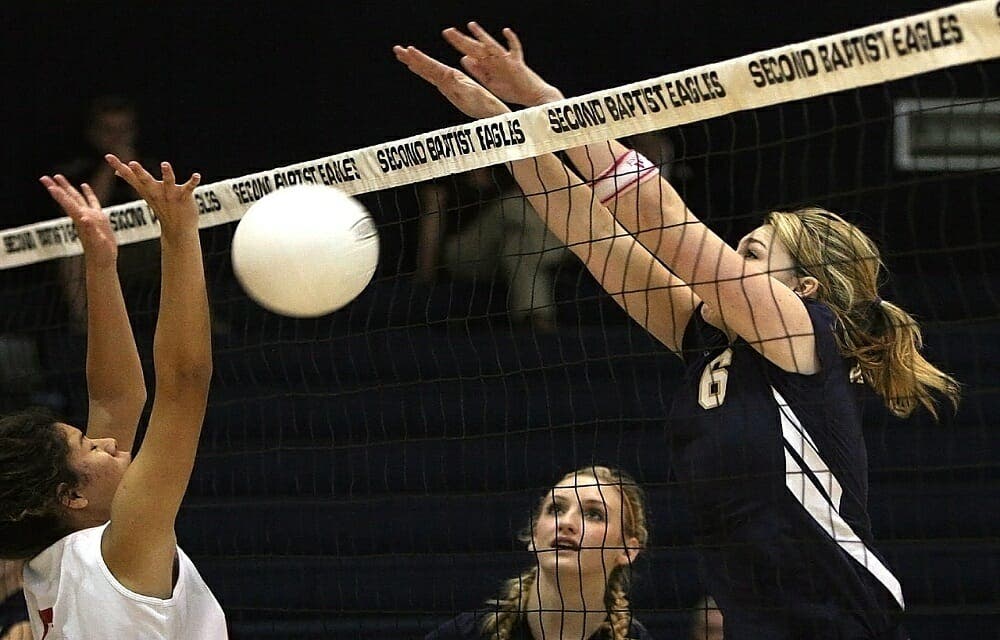Volleyball is a sport that is played between two teams, of six members each, on a playing field divided by a central net over which a ball must be passed that is hit with the hands or arms. According to the rules of volleyball, the object of the game is to pass the ball over the net and make it land on the ground on the opposite side or out of bounds, last touched by a player from the other team.
Its name derives from English volleyball , and in Spanish it is known as volleyball, volleyball or volleyball.

Become a volleyball expert knowing the origin, the basic rules or the positions of this game. With this brief summary of the basic rules of volleyball that we are going to offer you , you can enjoy a game or even encourage us to play it even on the beach.
Brief history of volleyball
Volleyball originated in 1985 by William Morgan, at the YMCA University in Massachusetts. It was designed for gyms or indoor venues, although it can also be played outdoors. The rules of volleyball are very similar to those of tennis or handball, but encompass less physical contact and roughness than in basketball.
In 1922 the rules of volleyball were established and the first international tournament regulated by the new official volleyball regulations was held. Until 1930, volleyball was mostly considered just an entertainment game, with few international matches existing.
In 1947, fourteen Federations founded the International Volleyball Federation (FIVB) in Paris, its first objective being to develop and improve the rules of this sport. At the Volleyball World Championship held shortly after, important steps were taken in its establishment as a sport.
Over the years, the rules have evolved in order to enhance the spectacle of the game. The rules of volleyball incorporated the libero, the possibility of scoring directly on each play without the need to have possession of the serve or touch with any part of the body.
Words used in volleyball rules
- Serve or serve: throwing the ball into the air from behind the baseline that initiates a point.
- Reception: touch of the forearms that intercepts the ball that comes from the service of the opposing team.
- Positioning: common finger touch on the second touch that distributes the ball to the spikers.
- Shot or Attack: I tap over the net to the opposite field looking for badly defended places.
- Blocking: interruption in the net by one or two contiguous players to return the ball to the opposing court.
- Defense: protection of the free zones of the field after the ball crosses the blocking line.
What are the main rules of volleyball?
Now that you know a bit about the history and lingo of the sport, the next step is to learn about the rules of volleyball. Thus, the next time you watch a game on television or live, you will be able to understand when it is a point, when it is a foul and when a game is won.
Playing field
The playing area is rectangular and consists of a field of 18 meters x 9 meters and a free space around it, where the ball can also be played. In addition, the space where the match is held must have a height of at least approximately 7 meters (as long as it is indoors).
In the middle of the field there is a net, which is 2.43 meters high for men’s matches and 2.24 meters for women’s matches.

Teams and players
The teams are made up of 12 players, of which 6 are on the field and the rest must remain seated on the bench. Each team has a libero and a captain . Three players are in front of the net in front of the attack zone and three in the defense zone.
Players rotate in clockwise order . Thus, the player from position 2 rotates to position 1 and the serve is made; the player in position 1 goes to position 6, the player in position 6 to 5, and so on until the cycle is completed.
Punctuation system
Matches are played to the best of five sets. The sets are at 25 points except for the last one, which is at 15 points. To win a set, there must be a difference of at least two points with the opponent.
Points are scored in different ways. For example, if after the service the ball goes long and bounces outside the field of play, it is a point for the opposing team; If after the three touches allowed by the side the ball passes to the opposing court and it falls within the court or within the lines, it is a point for the attacking team. The team that scores a point is the one that makes the next pass.
Other volleyball rules
Within the rules of volleyball, Faults cannot be forgotten: they are penalized, for example, when a team touches the ball more than three times, when the net or the posts are touched and this interferes with the game or when there is an error in the rotation .
Beyond those mentioned, there are other regulations that regulate the practice of this sport. These include substitutions, time-outs, disciplinary sanctions and matters related to equipment and clothing.
Tips to start practicing volleyball
Here are some tips if you want to start practicing this sport:
- Learn the basic postures: Those who do not serve stand with their knees semi- bent, their torso bent forward and their arms together in front of the chest, with the palms meeting.
- Practice serving: Inexperienced players serve below the shoulder; with one hand they catch the ball and with the other they hit it.
- Skilled players serve over the shoulder, throwing the ball up and hitting it with their strong hand at head level.
- Learn the formations before you start practicing volleyball: Depending on the skills or failures of the team, different formations can be built: For example, the 4-2 is made up of four spikers and two setters, while the 5-1 is made up of five finishers and a single setter.
Volleyball benefits
- Boost agility : volleyball is perfect for gaining agility, since you have to be fast and move to catch the ball without falling.
- Strengthens legs and glutes : the almost permanent position of half squat, makes the work fall largely on the legs and glutes, making it a perfect sport to tone these areas.
- Improve reflexes : practicing volleyball helps to develop reflexes and the ability to react, since it is a very dynamic sport in which you have to be very attentive to prevent the opposing team from taking points.
- Increase endurance: volleyball helps to gain endurance and gain physical strength. The games can last from one hour to two and a half hours, approximately.
- Helps to lose weight: Volleyball is an aerobic sport, so it is very good for losing weight and burning fat.
If you want to play volleyball, you will have to maintain good physical shape. That is why cardio and weight training is elementary. All you have to do is get yourself some sportswear, appropriate footwear, and knee pads to protect yourself from falls.
